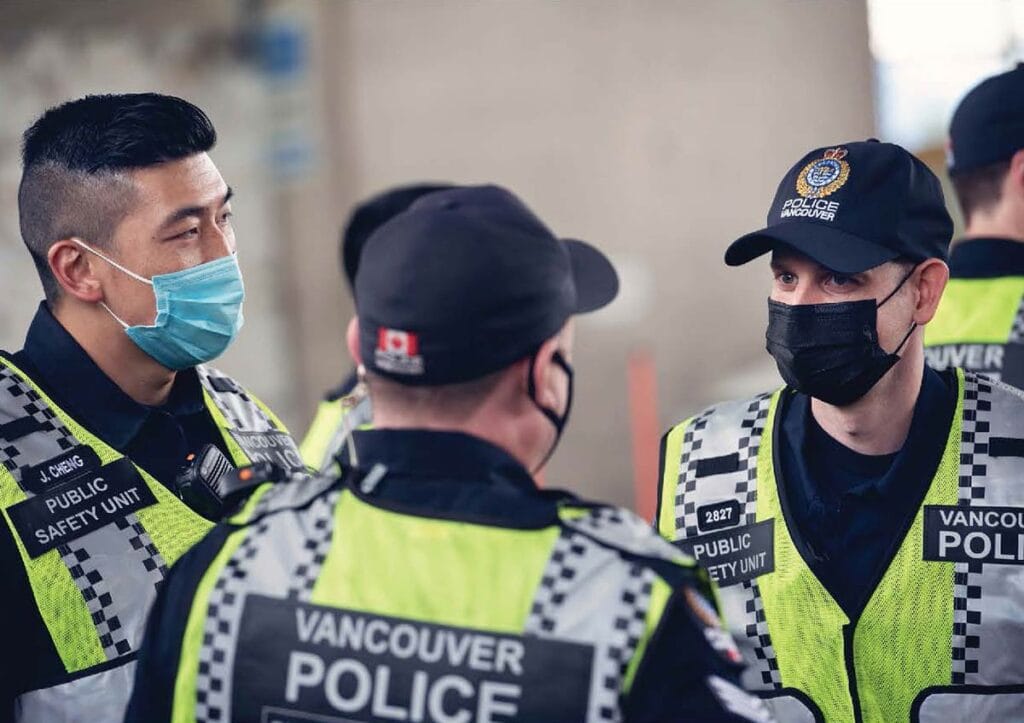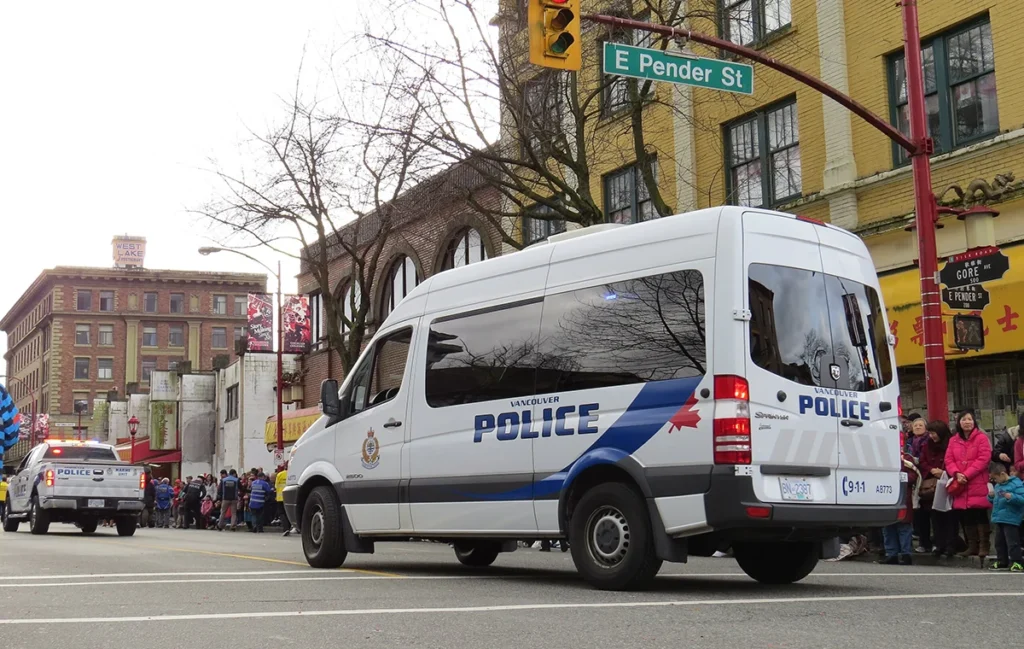The Vancouver Police Department (VPD) is staring down a financial overrun as it grapples with a projected budget overspend of $6.6 million by year’s end. Amid increasing pressures from protests, street disorder, and unanticipated events like the Israel-Hamas conflict, the VPD finds itself over budget by 5.2% in the second quarter of 2024—a reality that highlights the growing strain on public safety resources in Vancouver.
As the city braces for these additional costs, concerns are mounting over how this overspend will impact future spending plans and tax increases. With safety as a top priority for city leadership, Mayor Ken Sim has made clear that investments in policing will continue, despite budgetary challenges. But this raises a larger question: can Vancouver strike the right balance between fiscal responsibility and keeping the city safe?
Where the Money’s Going
The Vancouver Police Department’s financial troubles are not new, but the scale of this year’s overspend is a significant concern for both city officials and taxpayers. By the end of Q2, the VPD was already over budget by $10.7 million, a gap attributed primarily to overtime costs. The report notes that these unanticipated expenditures largely stem from the department’s involvement in major events and local protests related to international conflicts, including the Israel-Hamas war.
These high-profile events have placed extraordinary demands on the department, requiring significant resources to maintain order. For instance, the VPD was called upon to assist with the “Hastings Street cleaning”—an effort aimed at enforcing bylaws prohibiting structures on sidewalks in the Downtown Eastside (DTES). This operation, coupled with ongoing street disorder and decampment efforts, has put additional financial strain on the force.
While the department has been proactive in addressing these pressures, such as hiring 179 new officers since October 2022, staffing remains a challenge. Attrition due to retirements and officers leaving for other agencies has left gaps that require overtime to fill, further driving up costs.
Mayor Sim Stands Firm on Policing Investment
Despite these financial pressures, Vancouver’s Mayor Ken Sim is doubling down on his commitment to public safety. Speaking to reporters, Sim emphasized that budgetary concerns should not come at the expense of security on the streets. “We will continue to invest in public safety,” Sim said, making it clear that cuts to the VPD’s budget are not on the table. Instead, the city will need to find ways to cover the overspend—either through reallocating funds or adjusting spending elsewhere.
However, this approach has its critics. Councillor Pete Fry raised concerns about the financial implications of continued overspending, especially given the mayor’s promise to limit next year’s property tax increase to 5.5%. With the city already facing significant financial pressures—including hosting the upcoming FIFA World Cup—the question of how to pay for these growing police costs looms large.
But Sim’s stance reflects a broader priority shared by many voters—keeping Vancouver safe amid rising public safety concerns. With the VPD projecting even more significant financial commitments in the coming years, including an anticipated $486 million by 2028, it’s clear that public safety remains top of mind for city leadership.
Policing the Downtown Eastside: A Growing Challenge
Much of the VPD’s current overspend can be traced back to operations in the Downtown Eastside. This neighbourhood, known for its complex challenges around homelessness, addiction, and mental health, has been the focal point of numerous police interventions in recent years. The department has been called upon to enforce bylaws, assist in city-led decampment operations, and respond to public safety issues in the area.
The DTES represents a unique intersection of social and public safety issues, requiring a delicate balance between enforcement and community care. Critics argue that the VPD’s approach—focused on policing and enforcing laws—often fails to address the underlying causes of crime and disorder in the area. Proponents, however, insist that public safety must come first and that without law enforcement efforts, conditions in the DTES could worsen.
These challenges have been exacerbated by recent geopolitical events, which have sparked protests and demonstrations throughout the city, further straining police resources. The VPD has had to deploy officers to ensure safety and order at these events, resulting in overtime costs that contributed to the current budgetary shortfall.
Retirements, Attrition, and a Growing Paycheque
One of the VPD’s most significant challenges is staffing. Since October 2022, the department has hired 179 officers, but it has also lost 112 officers to retirements or transfers to other agencies. This high rate of attrition has left the department constantly playing catch-up, resulting in the need for additional overtime to cover shifts.
The VPD’s authorized staffing level is 1,448 officers, but the actual number varies from day to day due to new hires and retirements. While the department has worked to fill vacancies, it remains an uphill battle. And with Vancouver’s police officers on track to become some of the highest-paid in the country, budget pressures are unlikely to ease anytime soon. First-class constables are set to see their pay rise from $112,000 in 2023 to $122,000 by 2024, further increasing the department’s financial commitments.
The Future of Policing in Vancouver
As Vancouver’s police department grapples with an increasingly complex set of challenges, from geopolitical protests to local street disorder, the question of how to fund these efforts remains critical. With a projected $6.6 million overspend this year and no sign of costs slowing down, city leaders will need to make tough choices to balance the budget while ensuring the city’s safety.
But while the financial numbers are concerning, the VPD’s dedication to maintaining order in the face of mounting challenges cannot be overlooked. The department’s efforts in high-stress environments like the DTES and during large-scale events underscore the essential role law enforcement plays in maintaining public safety.
Looking forward, Vancouver’s leadership must find sustainable ways to support these efforts without placing undue financial strain on taxpayers. The city is on track to spend $440 million on policing in 2024—up significantly from the $348 million spent in 2021. By 2028, that number could approach half a billion dollars, a figure that has left some city officials concerned about long-term sustainability.
Striking a Balance
At its core, the debate over the VPD’s budget boils down to a fundamental question: how do we balance the need for robust public safety with the financial realities of running a city? For Mayor Sim and his administration, the answer lies in continued investment in policing, even as the city faces mounting costs. Critics, on the other hand, argue that without more innovative approaches, Vancouver risks falling into a cycle of overspending without addressing the root causes of crime and disorder.
As the city looks to the future, one thing is clear: public safety remains a top priority for both Vancouver’s leadership and its residents. How the city manages the financial strain of policing while maintaining its commitment to safety will be a key challenge in the years to come.
Glenn is dedicated to scrutinizing government actions affecting the Downtown Eastside and holding those in power accountable for their commitments. With a focus on transparency and policy analysis, his writing aims to expose gaps between promises and outcomes, pushing for meaningful changes that benefit the community.







Leave a Comment